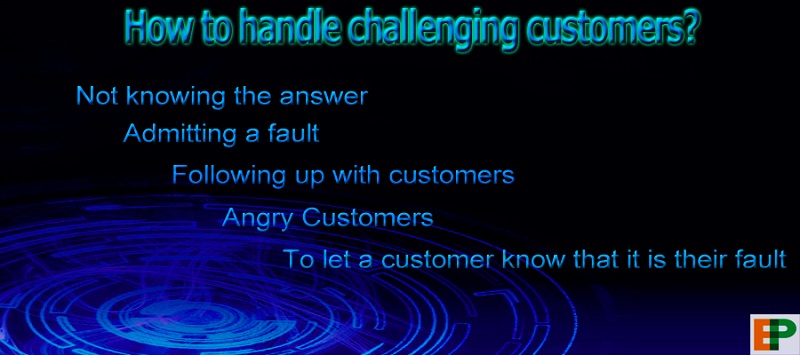There is no denying the fact that it is ‘good customer service’ that’ separates a good company from a great company with many believing that prewritten scripts are the reason for it. Does this mean that customer service is all about cold and lifeless conversations?
Giving to the complexity of customer services and varying situations, such scripts come handy as one has in mind a set reply to customers when situations go out of hand or when there is some sort of inability. Here we are discussing some interesting replies and techniques for 5 challenging scenarios.
1)Not knowing the answer
Being in customer service does not make us a company’s encyclopaedia that we will know the answer of each and every query presented to us. Therefore, most times we end up saying ‘I don’t know’ in such situations. It might be possible that the person you are conversing with gets sympathetic with you (though not everyone) but this not what he wants to hear. He needs an apt response to the query asked.
In such situations, you can reply back by saying “Yes Rachael, Good Question! Let me find it out for you”. Try reaching out your senior or a co- caller while you put the person is on hold. Just let them feel that though you don’t know the answer yourself, you will go all lengths to find that out for them.

2) Admitting a fault
It is very much possible that the customer is bringing to you a genuine concern where we ourselves are at fault. Keep in mind that it is okay to admit the fault.
You can reply in a manner similar to this.
Hi Rachael! I am really sorry for the problem. It happened because_____ (explain the reason why it happened). We will fix it in hours /days and get back to you.
It is always a good idea to give a sincere deadline to the customer so that he has a fair idea of how much time will you take in resolving the issue. End the conversation by saying that we will follow strict measures to ensure that the issue isn’t repeated again.
3) Following up with a customer
Make it a rule of the thumb to get back to a customer within a day whether you have solved or have not solved the problem. This will make them believe that their issue is a priority for you and it is being worked upon.
You can reply something similar to this.
“Hey,”Rachael! This is __Your name from __Company’s name; I am calling you to let you know we’re still working on resolving your situation. I will let you know as soon as it’s been fixed”
If their problem has been solved: “Hey, Rachael! This is __Your name from __Company’s name; I am calling you to let you know your problem has been fixed. Let us know if there’s anything else we can do for you!”
4) Angry Customers
For a customer care personnel there is no day when he does not receive an infuriated customer. Many times it is not their fault but unfortunately have to face the brunt of an emotional and angry customer. Here is what could be done to address such situations.
Step I – Apologise – Though, you know you are not at fault it is not a problem to say a sincere sorry. This will help the caller to mellow down (at least a little).
Step 2 – Understand and sympathise - Talk to them in a sympathetic tone and make them aware that you really understand their problem and will do everything in your limits to help them out.
Step 3 Start working on the problem- Obviously, you don’t want to face another angry storm and thus should start working towards reaching an amiable soluble for the query raised.
5) To let a customer know it is their fault
Though it is not a great idea to make a customer realise that they were themselves the reason for the problem caused. However, many times it becomes the need of the time.
A good and tactful way out here is.
“Hey Rachael, We are really sorry that this happened to you. While we can help you with __problem X, we can’t help with __ (their current problem) due to our company policies. If you’d like our help with [problem X] or if there is anything else we can do for you, please let us know! We are all here to help you.”










